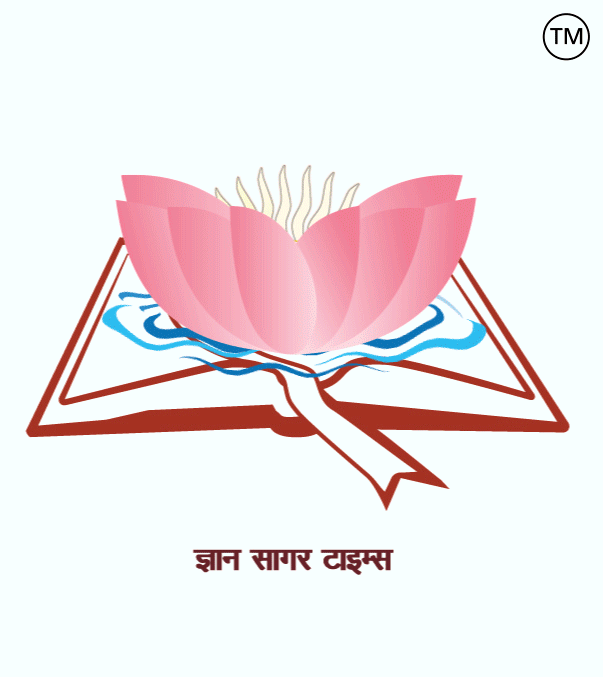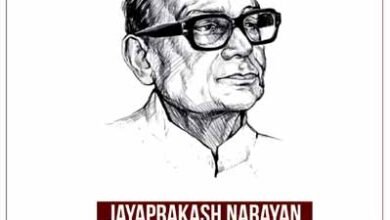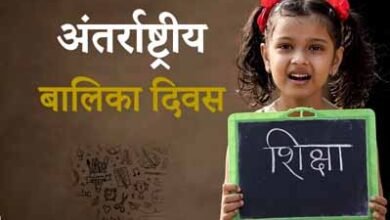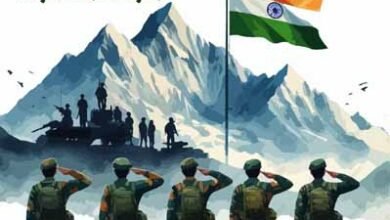
जलियांवाला बाग़ हत्याकांड स्मृति दिवस…
जलियांवाला बाग़ हत्याकांड स्मृति दिवस, हर वर्ष 13 अप्रैल को उस भयानक त्रासदी की याद में मनाया जाता है जिसने भारतीय स्वतंत्रता संग्राम के इतिहास में एक गहरा और कभी न भरने वाला घाव छोड़ दिया. 13 अप्रैल 1919 को बैसाखी के दिन, अमृतसर के जलियांवाला बाग़ में ब्रिटिश सरकार के क्रूर चेहरे का प्रदर्शन हुआ, जब जनरल डायर के नेतृत्व में ब्रिटिश सैनिकों ने शांतिपूर्वक विरोध कर रहे निहत्थे पुरुषों, महिलाओं और बच्चों पर अंधाधुंध गोलियां बरसाईं थीं.
ज्ञात है कि, प्रथम विश्व युद्ध के बाद, भारत में राजनीतिक अशांति बढ़ रही थी और ब्रिटिश सरकार ने राष्ट्रवादी आंदोलनों को दबाने के लिए दमनकारी कानून, रौलेट एक्ट पारित किया था, जिसके तहत किसी भी भारतीय को बिना किसी मुकदमे के गिरफ्तार किया जा सकता था. इस कानून के खिलाफ पूरे देश में विरोध प्रदर्शन हो रहे थे वहीं, अमृतसर भी इस विरोध का केंद्र था. 9 अप्रैल 1919 को लोकप्रिय राष्ट्रवादी नेता डॉ. सत्यपाल और डॉ. सैफुद्दीन किचलू को गिरफ्तार कर लिये गए, जिससे लोगों में और अधिक आक्रोश फैल गया. वर्ष 1919 को 13 अप्रैल के दिन भी बैसाखी का त्योहार मनाया जा रहा था और हजारों लोग जलियांवाला बाग़ में एकत्रित हुए थे. वहीं, कुछ लोग रौलेट एक्ट के खिलाफ शांतिपूर्ण विरोध प्रदर्शन के लिए जमा हुए थे, जबकि कई ग्रामीण बैसाखी के मेले में घूमने आए थे और इस सभा से अनजान थे. बताते चलें कि, जलियांवाला बाग़ चारों तरफ से ऊंची दीवारों से घिरा एक संकरा मैदान था, जिसमें प्रवेश और निकास के लिए केवल एक छोटा सा रास्ता था.
जनरल डायर, जिसने शहर में लगे मार्शल लॉ का हवाला देते हुए किसी भी सभा को गैरकानूनी घोषित कर दिया था, और वह अपने सैनिकों के साथ बाग़ में पहुंचा। उसने बिना किसी चेतावनी के सैनिकों को भीड़ पर गोली चलाने का आदेश दिया। सैनिकों ने लगभग दस मिनट तक लगातार गोलियां बरसाईं। भागने का कोई रास्ता न होने के कारण हजारों निर्दोष लोग गोलियों का शिकार हुए. बाग़ में स्थित एक कुएं में भी कई लोगों ने जान बचाने के लिए छलांग लगा दी, लेकिन वह भी लाशों से भर गया. ब्रिटिश सरकार के आधिकारिक आंकड़ों के अनुसार इस हत्याकांड में 379 लोग मारे गए और लगभग 1200 लोग घायल हुए. हालांकि, भारतीय अनुमानों के अनुसार मरने वालों की संख्या कहीं अधिक थी, जो 1000 से भी ऊपर बताई जाती है. मृतकों में बच्चे और महिलाएं भी शामिल थीं. जलियांवाला बाग़ हत्याकांड ने पूरे भारत को हिला कर रख दिया। इस क्रूर कृत्य की चौतरफा निंदा हुई. रवींद्रनाथ टैगोर ने इस घटना के विरोध में अपनी नाइटहुड की उपाधि त्याग दी. इस हत्याकांड ने भारतीय स्वतंत्रता संग्राम को एक नई दिशा दी और लोगों के मन में ब्रिटिश शासन के प्रति घृणा और विरोध की भावना और प्रबल हो गई. इससे महात्मा गांधी के असहयोग आंदोलन को भी गति मिली थी.
वर्तमान समय में भी जलियांवाला बाग़ उस भयानक त्रासदी की याद दिलाता है. वहां शहीदों की स्मृति में एक स्मारक बनाया गया है, जो उन निर्दोष लोगों के बलिदान का प्रतीक है. हर वर्ष 13 अप्रैल को जलियांवाला बाग़ हत्याकांड स्मृति दिवस मनाया जाता है, जिसमें शहीदों को श्रद्धांजलि अर्पित की जाती है और उस काले दिन को याद किया जाता है.
जलियांवाला बाग़ हत्याकांड न केवल भारत के इतिहास का एक दुखद अध्याय है, बल्कि यह दुनिया भर में अन्याय और अत्याचार के खिलाफ संघर्ष की प्रेरणा भी है. यह हमें याद दिलाता है कि शांति और अहिंसा के मार्ग पर चलकर ही एक न्यायपूर्ण और मानवीय समाज की स्थापना की जा सकती है.
========== ========= ===========
Jallianwala Bagh Massacre Memorial Day…

Jallianwala Bagh Massacre Memorial Day is observed every year on 13 April to commemorate the horrific tragedy that left a deep and never-healing wound in the history of the Indian freedom struggle. On 13 April 1919, on the day of Baisakhi, the cruel face of the British government was exposed in Jallianwala Bagh, Amritsar, when British soldiers led by General Dyer fired indiscriminately at unarmed men, women and children protesting peacefully.
It is known that, after the First World War, political unrest was increasing in India and the British government passed the repressive law, the Rowlatt Act, to suppress the nationalist movements, under which any Indian could be arrested without any trial. Protests were being held all over the country against this law, and Amritsar was also the centre of this protest. On 9 April 1919, popular nationalist leaders Dr. Satyapal and Dr. Saifuddin Kitchlu were arrested, which caused further anger among the people. On 13 April 1919, the festival of Baisakhi was being celebrated and thousands of people had gathered in Jallianwala Bagh. At the same time, some people had gathered for a peaceful protest against the Rowlatt Act, while many villagers had come to visit the Baisakhi fair and were unaware of this gathering. Let us tell you that Jallianwala Bagh was a narrow field surrounded by high walls on all sides, with only a small path for entry and exit.
General Dyer, who had declared any gathering illegal citing the martial law imposed in the city, arrived at the garden with his soldiers. He ordered the soldiers to fire on the crowd without any warning. The soldiers fired continuously for about ten minutes. With no way to escape, thousands of innocent people fell victim to bullets. Many people also jumped into a well located in the garden to save their lives, but it was also filled with dead bodies. According to the official figures of the British government, 379 people were killed and about 1200 people were injured in this massacre. However, according to Indian estimates, the number of people who died was much higher, which is said to be above 1000. Children and women were also among the dead.
The Jallianwala Bagh massacre shook the whole of India. This cruel act was condemned all around. Rabindranath Tagore renounced his knighthood in protest against this incident. This massacre gave a new direction to the Indian freedom struggle and the feeling of hatred and opposition towards the British rule became stronger in the minds of the people. This also gave impetus to Mahatma Gandhi’s non-cooperation movement. Even in the present times, Jallianwala Bagh reminds us of that tragedy. A memorial has been built there in the memory of the martyrs, which is a symbol of the sacrifice of those innocent people. Every year on 13 April, Jallianwala Bagh Massacre Memorial Day is celebrated, in which tribute is paid to the martyrs and that black day is remembered.
The Jallianwala Bagh massacre is not only a sad chapter in the history of India, but it is also an inspiration for the struggle against injustice and tyranny across the world. It reminds us that a just and humane society can be established only by following the path of peace and non-violence.





